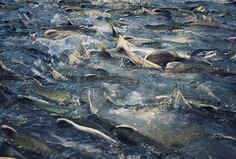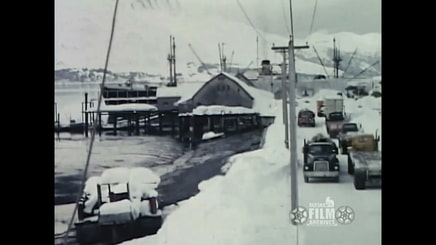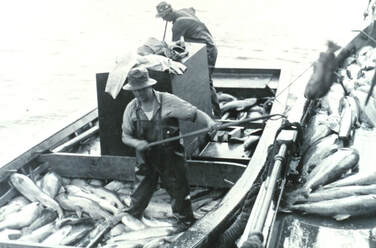Valdez Summer 1961

Long before it was destroyed by the Great Earthquake of 1964, and before it became the terminus for the Alaska Pipeline, Valdez was known for three things: The beginning of the Gold Rush, an open-water port all winter, and fishing.
It was the fishing that impressed me. During the salmon runs of June and July, the town smelled like rotting fish. Spawning fish populated every stream and ditch. Seagulls sat on their backs and literally ate them alive as they turned green and grey, struggling to die as they moved tails right and left, in and out of the shallow streams and ditches. Even black bears would venture into downtown Valdez to partake of free lunch. The town doctor’s energetic black lab would stand in the shallow water, grab fish, and throw them up on the bank of the stream. The run was in every little waterway.
Every summer, during the salmon run, a large floating cannery, a processing ship, would sidle up to the dock and its large warehouse, and accept silver salmon brought in by the local fishing boats arriving laden with fish.
These boats were called purse seiners because they operated by using a small skiff to surround a large school of salmon with a net, and then close the bottom of the net like drawing on a purse string. The salmon would be unable to escape the purse, especially if an illegal M-80 firework was dropped into the squirming mess of fish trying to dive over the net as it was pulled up. Even without the enhanced explosion, holds were filled to the brim and the boats returned to the town dock ready to disgorge their contents.
Arriving and bumping up against the large floating processing plant was followed by two or three fisherman gaffing fish up into a hopper on the cannery. This meant they used a long pole with a sharp slightly curved metal hook on the end. Sticking it into the hold allowed them to lift and slide off several fish at a throw.
The fish would enter the hopper and slide down onto a conveyer belt. This would propel them along all in a row, where a group of women would slice them open, rip out their guts, chop off their heads and tails, and move them along into a mechanical canner. The cans would be steam cooked and come out on large flat iron pallets, very hot, about 100 cans at a time. The pallets would then be forklifted to the main warehouse.
Since the available workers in Valdez were limited, the Cannery owners would hire almost anyone who could stand on two legs and follow directions. Thus began my first salaried job at the age of 14. I told the employer I was 16, though I was almost 15 at the time. I was hired to work on the dock, stacking cooled cans into boxes for delivery. It was a grueling 8 hour a day job, paying $1.15 an hour. I thought that was good money!
Upon the receipt of my first real paycheck, I was summoned into the employer’s office on the boat. The company KNEW I was not yet 16 since I had no social security card. On the spot I got my check and a form to apply for a social security number. I was sent back to work with no mention of child labor laws.
At the end of the third week, after receiving my second paycheck, I decided it would be more fun to go to an afternoon movie with Linda Lawrence. I had literally run into her with my bicycle and invited her to a movie despite the time coinciding with a workday. I decided at that moment that stacking cans was not a viable career, so I quit, and decided to seek a different career.

